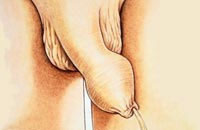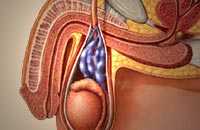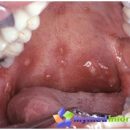Why phimos occurs? What are the symptoms and methods of treatment of phimosis? What are the complications of phimosis? You can find answers in this article.
Content
Types of phimosis
Phyms - narrowing of the outer opening of the extreme flesh. This is one of the most frequent malfunctional defects. Its prevalence from 15, 3% to 22.7%, of which each third is children under 7 years old. It must be remembered that phyms is congenital and acquired. Congenital narrowing of the foreskin is observed in most newborns as a physiological phenomenon of up to 3 years. During the first 3 years of life, the external opening of the extreme flesh occurs, the physiological phimosis passes spontaneously by 4 years and does not need additional correction. Physiological phimosis has all the same complications as phoza usual, acquired.
Causes of phyology
The acquired phyms can be formed under the influence of various factors:
 The inflammation of the extreme flesh and the head of the penis (balanopostitis) can lead to an external flesh edema and a temporary decrease in the diameter of its outer hole.
The inflammation of the extreme flesh and the head of the penis (balanopostitis) can lead to an external flesh edema and a temporary decrease in the diameter of its outer hole.- Mechanical injury can lead to the formation of scar tissue (not able to stretch) of extreme flesh.
- In childhood in the period of active growth of the head and extreme flesh, there may be a temporary or constant inconsistency of the diameter of the head and the outer opening of the extreme flesh.
- Insufficiency of connective tissue in the body, which has a genetic predisposition.
- Sinechia - Spikes between the head of the penis and extreme flesh prevent the release of the head of the penis, are the option of the norm in children up to 3 years. Very often, physiological lubricant or Smegma is shone under the skin - this is a cotton mass, which is a good nutritional medium for microorganisms and often serves as the inflammatory processes of the Balanite and Balantostite. Sinechia is recommended to breed.
How phimos is manifested
Fimosis is manifested by the following symptoms:
- The narrowing of the extreme flesh is determined, and it is impossible to expose the head of the penis, due to the formation of scar phimosis.
- Sometimes children appear painfulness, discomfort when urine, under the pressure of urine is inflated «ball» at the end of the penis. It happens that the baby is hard to urinate, you have to sleep. At the same time urine is released by a thin flowing.
- Hypertrophic phimosis, this disease is characterized by excessive farm, its thickening and loss of elasticity, which makes it difficult to fully eliminate the head of the penis.
Danger of phyhoshosis
FMOM is dangerous by the following complications:
- When phimos, Balanopostitis often occurs.
- With a very narrow hole of the extreme flesh, the penis head is infringement - paraphomosis.
- Fimosis makes urination, resulting in a pressure in urinary tract. And this, in turn, can lead to such serious diseases as pyelonephritis and hydronephrosis.
- Continuous fitting increases pressure and in the abdominal cavity, which is why hernia may appear or the loss of the rectum.
How phimos is treated
As a rule, the treatment of phimosis is reduced:
- to excision of the extreme flesh;
- To the separation of adhesions between the head of the penis and the extreme flesh. This is carried out under general anesthesia or without anesthesia («For power»). The child gets a psychological trauma after this operation and often arises recurrence of phimosis;
- To corticosteroid therapy. Regular and frequent use of corticosteroidal ointments on the head of the penis and extreme flesh slightly increases the elasticity of the fabric of the extreme flesh, as a result of which it can stretch out, so the degree of illness decreases. However, in practice, even from the multi-month use of corticosteroid ointments, no effect is not observed.









